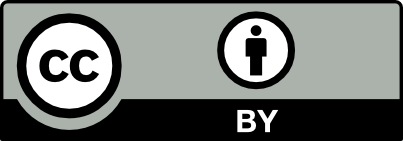Examination of DON-toxin content of milling byproduct generated after color sorting
DOI:
https://doi.org/10.14232/analecta.2019.2.38-46Keywords:
DON-toxin, wheat, by-product, color soringAbstract
Thanks to the favorable impact of vintage effect occurring in recent years the Fusarium contamination of wheat and consequently a high DON-toxin concentration is often caused problem. The DON-toxin in terms of human and animal health is a serious food safety risk factor. Therefore, it is important that there are methods during the wheat milling process which reduces the level of toxin.
We confirmed in our earlier examinations, that with the help of modern color sorting machine the DON-toxin content of wheat items is effectively can be reduced. The question is, during the process how parallel changes the mycotoxin content of by-products, which are used primarily as animal forage. The authors are presented an analysis of these relevant experimental data. The results show, that the toxin content of the by-product is exceeds the starting wheat item's toxin content. However, the result of the regression analysis shows that no correlation in the toxin contents between the starting raw material, purified wheat and by-product. This should be considered to the users when they would like to utilize the by-product as ingredient of forage or feedstuff.
Downloads
References
[2] GALVANO, F., GALOFARO, V., GALVANO G. (2005): Mycotoxins in the human food chain. In: Diaz D. (eds.): The Mycotoxin Blue Book. Nottingham Press, 187-224.
[3] VÁRADI, M. (2005): Az élelmiszerbiztonság és -minőség kihívásai az élelmiszeranalitikában. Magyar Kémiai Folyóirat, 111 (3) 118-123.
[4] MESTERHÁZY, Á. (2007): Mikotoxinok a gabonatermesztésben: az élelmiszerbiztonsági kihívás. Élelmiszervizsgálati közlemények,. LIII. kötet. (53 különszám). 38-48.
[5] VERES E., BORBÉLY M. (2007): Az őszi búza felhasználhatósága a vizuális és mikrobiológiai Fusarium fertőzöttség-, valamint a toxin vizsgálatok alapján. Agrártudományi közlemények, (12), 26-34. o.
[6] PRINCZINGER, G. (2009): Búza, fuzáriumok, toxinok. MezőHír, 8(8):14-18.
[7] RAFAI, P., KOVÁCS, M. (2009): A takarmányok mikotoxin szennyezettségének igazságügyi állatorvostani vonatkozásai. Állattenyésztés és Takarmányozás, 58. (5), 413-424.
[8] AMBRUS, Á., SZEITZNÉ SZ, M. (2010): Gabona alapú termékek mikotoxin szennyezettségének élelmiszerbiztonsági értékelése. Élelmiszer, Tudomány, Technológia LXIV. (1) 10-14.
[9] BÚZA, L., SCHILL, J. (2010): A mikotoxinok vizsgálati módszerei, eredményei, előfordulásuk a hazai takarmányokban. In: Kovács M. (szerk.): Aktualitások a mikotoxin kutatásban. Agroinform Kiadó. Budapest, 14-19.
[10] KOVÁCS, M. (2010): A mikotoxinok humán-egészségügyi vonatkozásai. In: Kovács M. (szerk.): Aktualitások a mikotoxin kutatásban. Agroinform Kiadó. Budapest, 86-102.
[11] DEÁK, T. (2011) Élelmiszer-mikrobiológia. Mezőgazdasági Kiadó. 382. ISBN 9789632866345
[12] SZABÓ-HEVÉR, Á. (2013): A kalászfuzárium rezisztencia molekuláris hátterének vizsgálata frontana eredetű térképező búzapopulációkban, SZIE, Doktori értekezés. 141.
[13] KECSKÉSNÉ NAGY, E., SEMBERY, P. (2014): Egy malomipari feldolgozási folyamat műszaki feltételeinek a vizsgálata élelmiszerbiztonsági szempontból. Gradus 1:(2) 44-50.
[14] NAGY KECSKÉSNÉ, E., SEMBERY, P. (2015): Color sorting of bread-making wheat and change of toxin content. Annals of faculty engineering hunedoara / international journal of engineering 13:(1) 171-174.
[15] COMMISSION RECOMMENDATION of 17 August 2006 on the prevention and reduction of Fusarium toxins in cereals and cereal products (Celex number: 32006H0583)
Downloads
Published
How to Cite
Issue
Section
License
Copyright (C) 2023 Authors
This work is licensed under a Creative Commons Attribution 4.0 International License.













